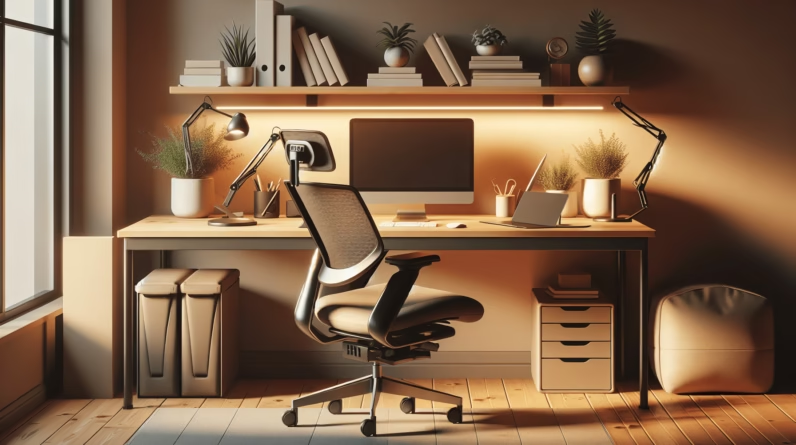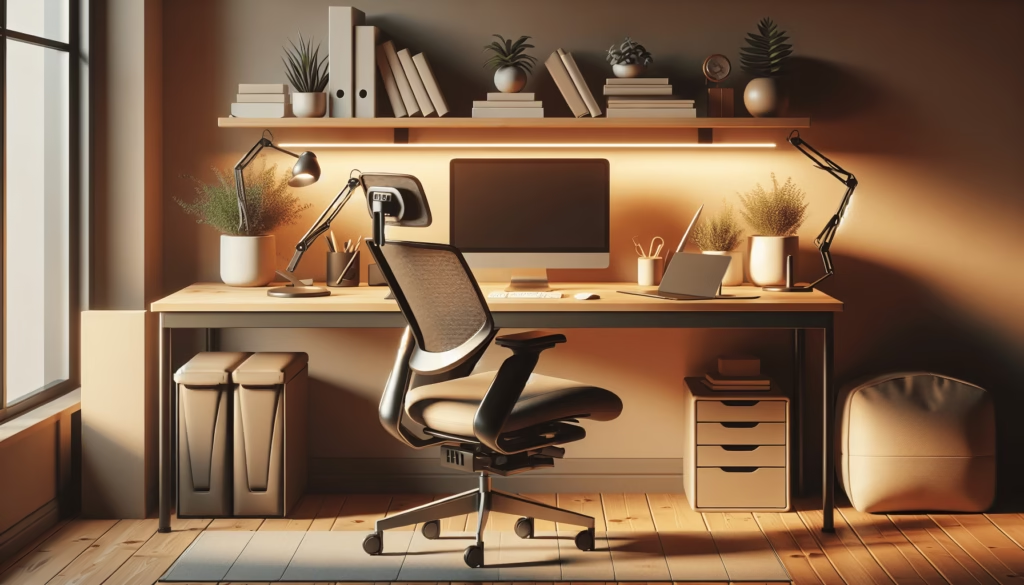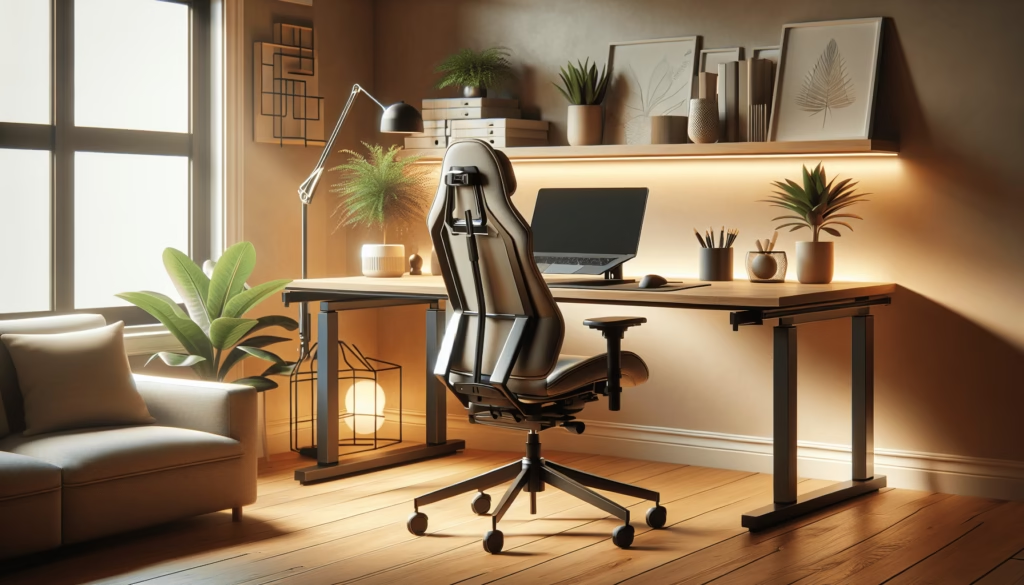
What does your ideal remote workspace look like?
Creating a comfortable and ergonomic home office environment is essential for maintaining productivity and overall well-being, especially when you work from home. With the right setup, you can reduce strain on your body and enhance your focus. Let’s walk through some key elements to consider when crafting your perfect remote workspace.
Buy Ergonomic Office Furniture
Table of Contents
Understanding Ergonomics
To begin, it’s important to understand what ergonomics means in the context of your workspace. Ergonomics is the science of designing and arranging things so that people can interact with them most efficiently and safely. Basically, it’s all about making your work environment work for you, not against you.
When your workspace is ergonomically designed, you can reduce the risk of discomfort and injuries. This includes everything from how you sit at your desk to how you position your screen. Let’s break it down further.
The Importance of Posture
Your posture is a significant factor in how comfortable you feel while working. When you maintain proper posture, you can help prevent tension and strain in your neck, back, and shoulders. It’s about finding that right balance between comfort and support.
- Sit Back in Your Chair: Ensure your back rests against the chair. This makes a significant difference in how much strain you place on your back.
- Keep Your Feet Flat: Make sure your feet rest flat on the floor or on a footrest. This promotes circulation and stability while working.
Adjusting Chair Height
Your chair height can greatly affect your comfort level. The right chair will encourage good posture and allow for free movement.
- Elbow Position: Your elbows should form a 90-degree angle or be slightly obtuse when typing. This can prevent unnecessary strain on your wrists.
- Screen Level: Adjust your chair or desk height until your screen is at eye level. You shouldn’t have to tilt your head up or down, as this can lead to neck tension over time.
Choosing the Right Furniture
Choosing the right furniture for your workspace is vital for both comfort and functionality. Let’s dive into what makes a good office chair and desk.
The Ideal Office Chair
A good office chair is an investment in your health and productivity. Here are key features to look for:
| Feature | Description |
|---|---|
| Lumbar Support | Supports the natural curve of your lower back. |
| Adjustability | Ability to adjust height, tilt, and armrests according to your preference. |
| Comfortable Material | Soft yet supportive fabric or material that allows for breathability. |
Make sure the chair fits you well. It should support your body shape and size comfortably, helping to keep you engaged and focused throughout the day.
Selecting the Perfect Desk
Your desk also requires careful consideration. Here are some suggestions:
| Desk Type | Pros |
|---|---|
| Standard Desk | Offers a solid workspace; provides enough surface area for computers and paperwork. |
| Standing Desk | Promotes movement and reduces the time spent sitting. |
| L-Shaped Desk | Provides ample surface area; works great for multitasking with different devices. |
Think about your work habits and choose a desk that facilitates how you like to work, whether sitting, standing, or shifting between both.

Shop For Home Office Essentials
Integrating Technology
Your technology setup can also have a significant effect on comfort and productivity at home. The right equipment can enhance your work experience.
Monitor Positioning
Having your monitor at the correct height and distance is crucial. Here’s how to get it right:
- Eye Level: The top of your monitor should be at or slightly below eye level.
- Distance: Position your monitor about an arm’s length away. This helps reduce eye strain and keeps you more engaged with your work.
Keyboard and Mouse
The positioning of your keyboard and mouse can also influence your comfort. Here are tips:
- Keyboard Height: Your keyboard should be positioned so that your wrists remain straight while you type.
- Mouse Accessibility: Keep your mouse close to your keyboard to prevent reaching too far, which can lead to shoulder strain.
Lighting Considerations
Good lighting can make all the difference in your workspace. Proper illumination helps reduce eye strain and boosts your mood. Let’s look at how to adjust lighting in your workspace.
Natural Light
If possible, place your desk near a window. Natural light can enhance your mood and energy levels throughout the day. Just ensure that the light doesn’t create glare on your screen, which could cause discomfort.
Artificial Lighting
If natural lighting isn’t available or you work into the evening, invest in some quality task lighting. Here’s what to consider:
- Adjustable Desk Lamp: Allows you to direct light exactly where you need it.
- LED Bulbs: These are often softer on the eyes and more energy-efficient.

Climate Control
The temperature of your workspace can significantly impact your comfort and ability to focus. Here are a few considerations:
Finding Your Ideal Temperature
Personal preferences for office temperature can vary widely, but a comfortable range is usually 68-72°F (20-22°C). If you find yourself overheating or getting too chilly, consider:
- Thermostat Control: Adjust your environment to maintain your preferred working temperature.
- Layered Clothing: Dress in layers so you can easily adapt to temperature changes throughout the day.
Air Quality
Maintaining good air quality is essential for cognitive function. Consider these suggestions:
- Ventilation: Ensure your workspace has good airflow. Open windows when possible to let fresh air circulate.
- Plants: Adding some greenery can enhance air quality and brighten your space.
Spatial Organization
The layout of your workspace is crucial for promoting productivity and comfort. An organized space can create a clear mind and a more enjoyable working experience.
Desk Organization
A clutter-free desk fosters focus and organization. Here’s how to achieve that:
- Minimalism: Keep only what you need on your desk. Use trays or organizers to separate different categories of items.
- Cable Management: Using cable clips and ties can help keep cords organized and prevent tangling.
Creating Zones
If your workspace is large enough, consider creating different zones for various tasks. For example:
| Zone | Purpose |
|---|---|
| Work Zone | Main focus area for completing tasks. |
| Relaxation Zone | A nook to take breaks, promoting mental health. |
| Storage Zone | Where all files and supplies are kept. |
Establishing clear boundaries can help you switch between tasks more easily and maintain better productivity.
Taking Breaks and Movement
Sitting for extended periods can take a toll on your body, even in a well-designed ergonomic workspace. Here’s how to incorporate movement into your day.
Scheduled Breaks
Consider following the 20-20-20 rule: every 20 minutes, look at something 20 feet away for 20 seconds. This helps reduce eye strain and keeps you mentally refreshed.
- Set a timer to remind you to take breaks.
- Use breaks as an opportunity to stretch your body or get a glass of water.
Incorporating Movement
Try introducing mini-exercises or stretches during your workday. Simple moves can rekindle your energy and reduce discomfort. Here are a few ideas:
- Neck Stretches: Tilt your head to one side and hold for 15 seconds; repeat in the opposite direction.
- Wrist Extensions: Extend one arm with the palm facing up and gently pull back the fingers with the other hand.
Personal Touches
Finally, don’t forget to add your personality to your workspace. A personal touch makes it feel inviting and can boost your morale.
Decor and Personal Items
Surround yourself with items that inspire you, whether they’re photos, artwork, or motivational quotes. Here are some ideas:
- Artwork: Hang paintings, prints, or photographs that make you smile.
- Succulents or Plants: Add life to your space with some greenery; plants can also improve air quality.
Organizing Personal Items
Keep your personal items organized yet accessible. A few well-placed photos or mementos can encourage feelings of comfort and joy while working.
Conclusion
Designing a comfortable and ergonomic remote workspace doesn’t have to be overwhelming. By understanding the principles of ergonomics, choosing the right furniture and technology, and considering personal touches, you can create an environment that not only enhances your productivity but also takes care of your well-being. As you embark on this journey, remember your comfort is essential, so listen to your body, adjust as needed, and enjoy the benefits of a well-designed workspace.







